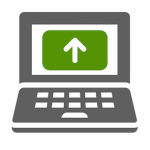 In September, Simmons College welcomed Marjorie “Honey” Pike as our new Director of Public Safety and Chief of Police. To help the campus community learn more about Honey’s background and plans for her work at Simmons, we sat down to ask her some questions about her approach to policing, community engagement, and more.
In September, Simmons College welcomed Marjorie “Honey” Pike as our new Director of Public Safety and Chief of Police. To help the campus community learn more about Honey’s background and plans for her work at Simmons, we sat down to ask her some questions about her approach to policing, community engagement, and more.
All posts by Randolph Pfaff
Academic Technology Corner: Faculty Development
This session will explore strategies for providing feedback in the Online Classroom. Students need much more support and feedback in the online environment than they may need in a traditional course. Using effective feedback strategies will enable the instructor to identify and meet individual student needs as well as encourage students to participate and continue to participate at a high quality level.
This session is open to ALL faculty—whether you teach online or on-campus. Visit the Faculty Fellows Hub to get complete details on all the sessions being offered.
Interested in signing up for this session? RSVP today!
Moving Forward with Computer Replacements
 During September and October, the Technology team has continued planning for the FY17 computer replacement program.
During September and October, the Technology team has continued planning for the FY17 computer replacement program.
We’ve developed a tentative timeline for working with departments to schedule computer replacements. This timeline is based on several factors, including the average age of computers currently used in each department and the total estimated replacement cost.
Our next steps will be to start interviewing department administrators in November and then begin a pilot rollout of new computers to a subset of five departments. Following the pilot period, we will expand the program quickly to other areas of the College during the 3rd and 4th quarters of the fiscal year.
As the project continues, we’ll share up-to-date information oncomputerupgrades.simmons.edu. If you have specific questions about computer replacements, please contact theService Desk.
Getting Connected at Daly Field
One of the most exciting projects at Simmons this summer was the completion of work on Daly Field, a new public-private partnership that provides space for several of the College’s sports teams and a vital outdoor resource for the Allston-Brighton community.
Simmons Technology recently wrapped up our efforts to ensure that Daly Field is a connected space, with the infrastructure necessary for security, digital scoring, and Internet-connected audio-visual equipment.
Best of all, Simmons Athletics is now live streaming games from Daly Field! Whether you’re in the stands, across town, or across the country, visit athletics.simmons.edu to cheer the Sharks on to victory.

Photo courtesy of simmons.edu
